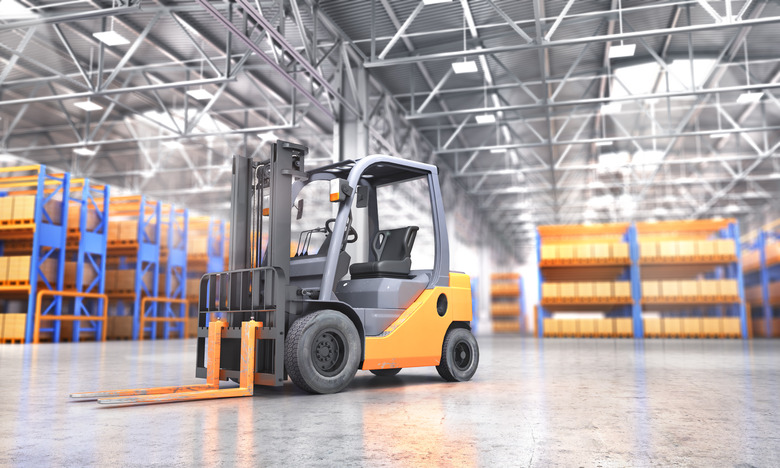What Is The Definition Of Hydraulic Lift?
A hydraulic lift is a type of machine that uses a hydraulic apparatus to lift or move objects using the force created when pressure is exerted on liquid in a piston. Force then produces "lift" and "work."
Function
Function
Hydraulic lift technology has a multitude of industrial applications, like construction and transport. It is often implemented to operate heavy machinery or to move and lift heavy and large objects like cars, dirt and shipping containers.
Physics
Physics
One of the physics equations that applies to hydraulic lift technology is "pressure x area = force." This helps determine the pressure exertion required on a liquid in a piston to produce enough force to provide lift and move an object.
Types
Types
Hydraulic lift technology can be found in hydraulic jacks, forklifts, car lifts, among many other machines. Machines can use it to provide the lift exertion (force) needed to produce work, such as moving another object.
Significance
Significance
Hydraulic lift technology is a critical aspect of engineering, without which many applications would not be possible unless another technology existed to replace it. Automotive, construction, avionics and shipping industries depend heavily upon it, and it has contributed to a large part of the modern world as we know it.
Fun Fact
Fun Fact
Even automobile brakes use hydraulics. When you push the brake pedal, it pushes a small piston in the brake master cylinder. The piston applies pressure on the brake fluid, which transfers the pressure through the brake lines, forcing another set of pistons to force the brake linings into contact with the brake drums on each wheel. The resulting friction of brake lining against brake drum slows the car down, eventually stopping the car.
Cite This Article
MLA
York, Nolita. "What Is The Definition Of Hydraulic Lift?" sciencing.com, https://www.sciencing.com/definition-hydraulic-lift-5610904/. 13 March 2018.
APA
York, Nolita. (2018, March 13). What Is The Definition Of Hydraulic Lift?. sciencing.com. Retrieved from https://www.sciencing.com/definition-hydraulic-lift-5610904/
Chicago
York, Nolita. What Is The Definition Of Hydraulic Lift? last modified March 24, 2022. https://www.sciencing.com/definition-hydraulic-lift-5610904/
